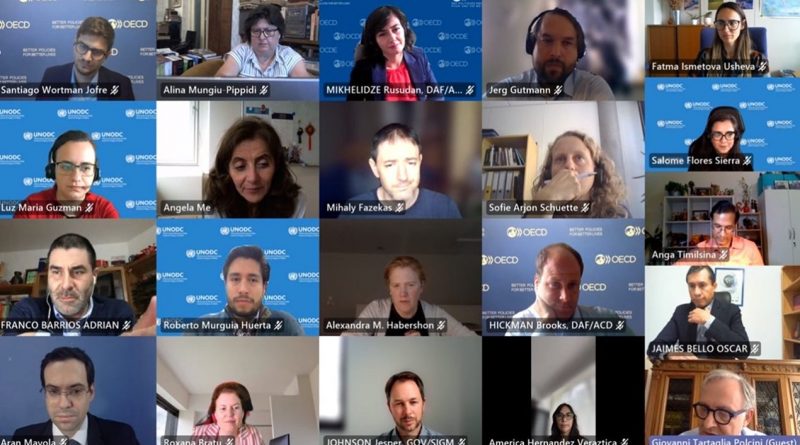Measuring corruption, the challenge for UNODC’s 2nd Task Force
Mexico City, June 30, 2021. The United Nations Convention Against Corruption (UNCAC) signed by 187 countries, in its article 61 mandates the collection, exchange and analysis of information on corruption. The Sustainable Development Agenda and its indicators on the prevalence of bribery in households and businesses marked an important step forward in the measurement of this phenomenon.
In 2018, the United Nations Office on Drug and Crime (UNODC) launched the 1st Task Force on Corruption Measurement, involved in the statistical measurement of corruption which generated the Manual on corruption surveys: Methodological guidelines on the measurement of bribery and other forms of corruption through sample surveys.
In 2019, the Conference of the State Parties of the United Nations Convention Against Corruption (UNCAC) issued Resolution 8/10 requesting UNODC to keep experts consultations to define and refine methodologies for measuring corruption and to formulate proposals to establish a comprehensive, scientifically rigorous and objective framework to assist States Parties in measuring corruption.
In response to this mandate, UNODC, through the Center of Excellence for Statistical Information on Governance, Public Security, Victimization and Justice (CoE), convened the 2nd Task Force on the Measurement of Corruption.
The first meeting gathered 22 experts actively involved in measuring corruption from National Statistics Offices such as the National Institute of Statistics and Geography (INEGI), think tanks such as Transparency International and the Government Transparency Institute, international organizations such as the World Bank, the Organization for Economic Cooperation and Development (OECD), the United Nations Development Programme (UNDP), representatives from the G20 Anti-Corruption Working Group and the Commonwealth Secretariat of the United Kingdom, civil society organizations such as the Center for Global Development and the Chr. Michelsen Institute, as well as academics from the University of British Columbia in Canada, the University of Hamburg in Germany, the University of Sussex in the United Kingdom, the University of Linz in Austria, the Hertie School of Government in Germany, among others.
The session began with welcoming remarks by Ms. Angela Me, Head of the Research and Trend Analysis Unit of UNODC and Mr. Adrián Franco, Vice President of INEGI. To open the discussion, Ms. Alina Mungiu-Pippidi, professor and researcher at the Hertie School of Government in Germany, presented the objectives, challenges and innovations related to the measurement of corruption at the global level.
The members of the Task Force exchanged ideas regarding the development of an ambitious framework with measurable indicators that could even integrate alternative sources of information that would allow the conduction of innovative analyses to understand the different dimensions and risks of corruption. They recognized the importance of interconnecting dimensions and indicators associated with its measurement -understanding the multidimensional nature of the phenomenon-, and highlighted the impact that corruption has on gender and on the reduction of inequality gaps.
With these actions, the Office seeks to contribute to the construction of more just and peaceful societies having a substantial impact on SDG 16 of the Agenda for Sustainable Development.



